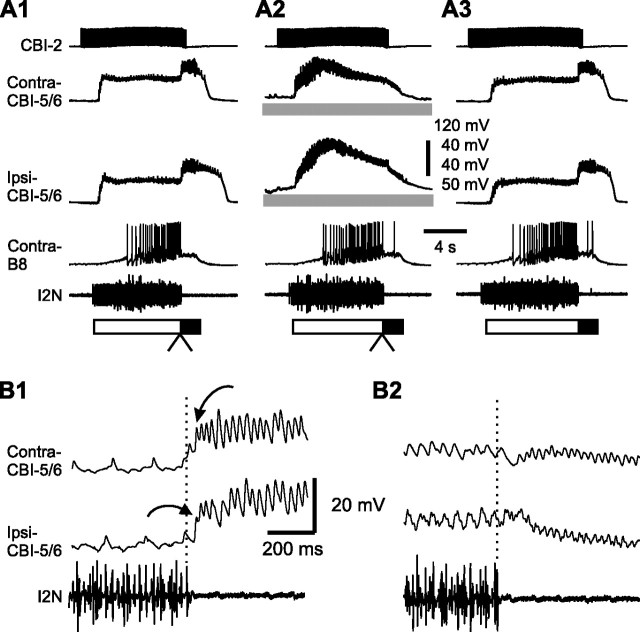Figure 5.
Effect of CBI-5/6 hyperpolarization on the duration of the protraction phase in CBI-2-elicited egestive programs. A1, A CBI-2-elicited egestive program in control condition. Before the programs were elicited by CBI-2 stimulation, four successive programs were evoked by continuous stimulation of EN (1.5 Hz). Note that, compared with CBI-2-elicited ingestive programs (Figs. 4A, 8A, and 10A), the high level of B8 activity occurred during the protraction phase. A2, Bilateral hyperpolarization of CBI-5/6 had no effect on protraction duration. A3, The program after the hyperpolarization was released. B, Expanded views of the transition between the protraction and retraction phases (A1, A2, arrowheads) without CBI-5/6 hyperpolarization (B1 is from A1) and with CBI-5/6 hyperpolarization (B2 is from A2). Note that in CBI-2-elicited egestive programs, antidromic spikes in CBI-5/6 began after the end of I2N activity (B1).

